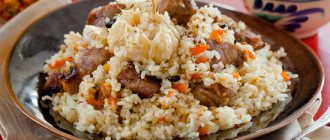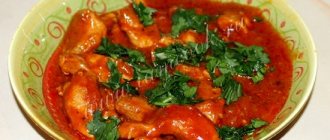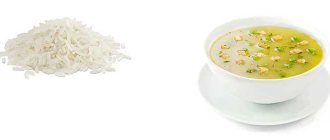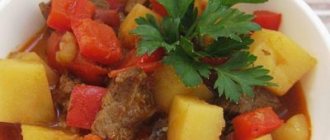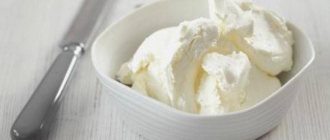Properties of Schnitzel
A real schnitzel, prepared according to all the rules, even despite its rather impressive size, is eaten quite easily and rarely remains on the plate.
This meat product is a cutlet that is pre-breaded and then fried in oil. When properly prepared, the finished schnitzel has a golden color and a crispy crust that easily separates from the meat. By the way, the word “schnitzel”, along with the dish itself, came to our country from Germany. From German, “schnitzel” is translated as “tenderloin,” that is, a simple piece of meat.
According to some sources, the official beginning of schnitzel dates back to the report of Field Marshal Radetzky back in 48 of the 19th century. In this document, he mentions a rather interesting Italian invention - a veal chop, before frying, dipped in beaten egg and then rolled in breadcrumbs.
It is customary to serve the finished schnitzel with only a slice of fresh lemon, which is squeezed onto the meat during the meal. For additional aesthetics, you can decorate the finished dish with a sprig of parsley and put canned black olive on the schnitzel. At the same time, you should not serve any gravy, sauces, or even ketchup on schnitzel.
Interestingly, in each country schnitzel is served differently. For example, in Vienna they serve it with a special potato salad, but on a separate dish. The composition of this salad may vary, but the essence remains the same - warm boiled potatoes and purple onions with green leaf lettuce. All ingredients are seasoned with a mixture based on beef broth, vegetable oil and wine vinegar.
Types of schnitzel
The types of schnitzel are determined by the choice of meat used to prepare this hearty dish. For example, many people prefer veal or beef, while others like to cook pork schnitzel. In addition, the types of schnitzel include a meat product based on chicken fillet or turkey meat.
Depending on the cooking method, there are two types of schnitzel - chop and chopped. The first involves briefly beating a piece of meat, and the second option is characterized by giving the required shape from small pieces.
Thus, the calorie content of schnitzel also depends on the type of original semi-finished product. For example, pork schnitzel is considered the most nutritious, while chicken and turkey products have the lowest calorie value.
Schnitzel composition
The composition of schnitzel can be easily determined by the definition of this dish - a thin piece of well-pounded meat (veal, beef, lamb, pork, chicken or turkey), as well as breading. As a rule, the last component in the schnitzel consists of breadcrumbs or white bread crushed into crumbs, a slightly beaten chicken egg, as well as a variety of spices as desired.
Calorie content of Schnitzel is 403 kcal.
Energy value of the Schnitzel product (Ratio of proteins, fats, carbohydrates).
Chicken schnitzel
rich in vitamins and minerals such as: vitamin B1 - 17.1%, vitamin B5 - 18.3%, vitamin B12 - 11.3%, vitamin PP - 27.8%, phosphorus - 26.3%, manganese - 11 .6%, copper - 23.3%, selenium - 44.7%
- Vitamin B1
is part of the most important enzymes of carbohydrate and energy metabolism, providing the body with energy and plastic substances, as well as the metabolism of branched amino acids. A lack of this vitamin leads to serious disorders of the nervous, digestive and cardiovascular systems. - Vitamin B5
is involved in protein, fat, carbohydrate metabolism, cholesterol metabolism, the synthesis of a number of hormones, hemoglobin, promotes the absorption of amino acids and sugars in the intestines, and supports the function of the adrenal cortex. A lack of pantothenic acid can lead to damage to the skin and mucous membranes. - Vitamin B12
plays an important role in the metabolism and transformation of amino acids. Folate and vitamin B12 are interconnected vitamins that are involved in hematopoiesis. A lack of vitamin B12 leads to the development of partial or secondary folate deficiency, as well as anemia, leukopenia, and thrombocytopenia. - Vitamin PP
is involved in redox reactions of energy metabolism. Insufficient vitamin intake is accompanied by disruption of the normal condition of the skin, gastrointestinal tract and nervous system. - Phosphorus
takes part in many physiological processes, including energy metabolism, regulates acid-base balance, is part of phospholipids, nucleotides and nucleic acids, and is necessary for the mineralization of bones and teeth. Deficiency leads to anorexia, anemia, and rickets. - Manganese
is involved in the formation of bone and connective tissue, and is part of enzymes involved in the metabolism of amino acids, carbohydrates, and catecholamines; necessary for the synthesis of cholesterol and nucleotides. Insufficient consumption is accompanied by slower growth, disturbances in the reproductive system, increased fragility of bone tissue, and disturbances in carbohydrate and lipid metabolism. - Copper
is part of enzymes that have redox activity and are involved in the metabolism of iron, stimulates the absorption of proteins and carbohydrates. Participates in the processes of providing oxygen to the tissues of the human body. Deficiency is manifested by disturbances in the formation of the cardiovascular system and skeleton, and the development of connective tissue dysplasia. - Selenium
is an essential element of the antioxidant defense system of the human body, has an immunomodulatory effect, and is involved in the regulation of the action of thyroid hormones. Deficiency leads to Kashin-Beck disease (osteoarthritis with multiple deformities of the joints, spine and limbs), Keshan disease (endemic myocardiopathy), and hereditary thrombasthenia.
more hide
You can see the complete directory of the most useful products in the application
“Cut” - this is how the name of this traditional Austrian dish, popular throughout the world, is translated from German. Today, many original versions of the Viennese chop have appeared, where chicken schnitzel remains the most popular, the calorie content of which does not exceed 200 kcal per 100 grams. This tender fillet in a batter that melts in your mouth represents the sophistication of European cuisine and at the same time allows you to occasionally enjoy delicious food even on a diet.
Varieties of Austrian schnitzel
As the name suggests, we owe the appearance of Wiener schnitzel to Austrian chefs of the 19th century. It was then that the thinnest cutlet of steamed veal in an unusual breading was prepared for the first time. It is the batter that distinguishes a schnitzel from a regular chop, and the method of deep-frying the meat from an escalope.
The high-ranking public liked the schnitzel so much that it very quickly spread beyond its homeland.
Subsequently, different European countries developed their own schnitzels, based, of course, on the classic Austrian recipe, but with their own subtleties.
- Hunter's schnitzel is the brainchild of the Germans and is prepared from pork or beef chops in mushroom and tomato sauce.
- French or Parisian schnitzel is a thin veal chop, which is fried without breading and batter in the usual way.
- Berliner schnitzel is made from cow's udder. First, the udder is boiled for about an hour in plain water, and then simmered in broth with vegetables and roots for another 4 hours.
Only after the product becomes soft is it cut into thin layers and cooked like a Wiener schnitzel, breaded and battered.
- Žicek is a similar Wiener schnitzel, but in Czech style. Everything here is the same as in the original: chop, breading, but the meat is not deep-fried, but in the usual way.
How to cook delicious pork schnitzel
As a result of simple steps, you will get a piece of meat that will be juicy inside, and with a crispy crust on top, so aromatic and appetizing that the question “To eat or not to eat?” will disappear instantly.
And it’s unlikely that it will appear at all, because we’ll be cooking in order to eat it all, but, as a last resort, to treat our friends who might come running when they hear the overwhelming aroma. Having decided on the prospects, we begin to prepare.
Have to take:
- Pork – up to one and a half kilograms.
- Salt as desired.
- Pepper as desired.
- Cheese – up to 200 gr.
- Eggs - half a dozen.
- Flour – 100 g is enough.
- Vegetable oil - about 150 ml.
Pork schnitzel recipe in a frying pan
1. We subject the meat to standard procedures: wash, dry and cut into portions.
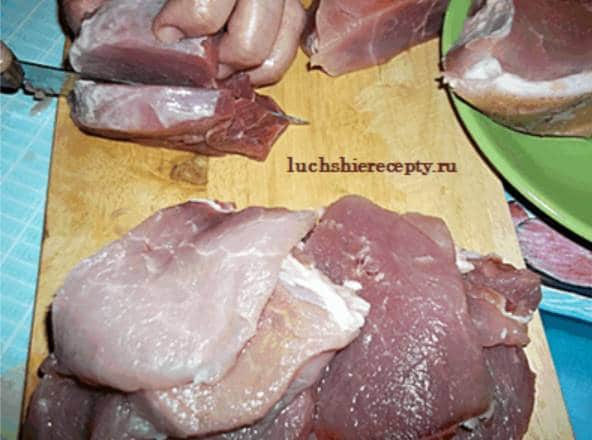
2. Add salt and pepper to the meat. In addition to these main flavor builders, you can add any spices you like. This will only enrich the taste of the schnitzel.
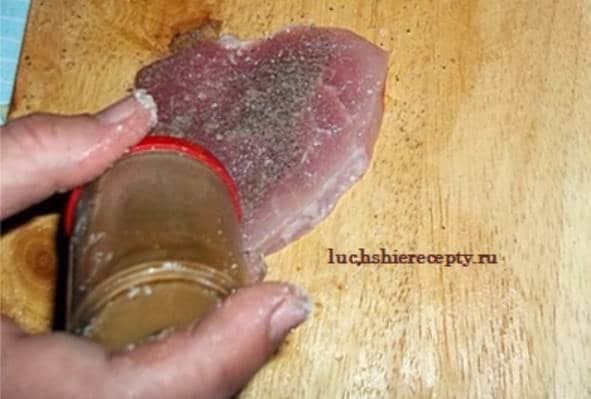
3. The highlight of the delicious schnitzel is its breading. We will do double breading. Grate the cheese (hard).
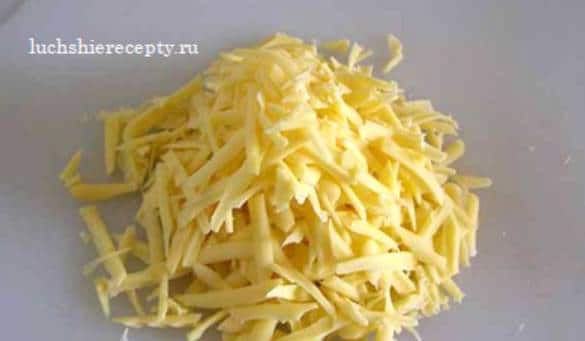
4. Place eggs and grated cheese into a deeper bowl. Beat everything until smooth. The number of eggs involved depends on the number of schnitzels planned.
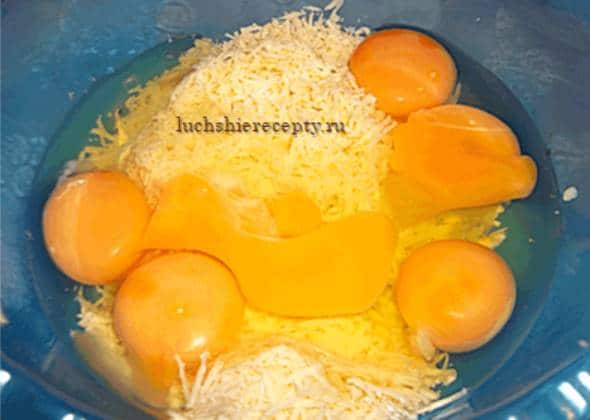
5. We prepare the flour in which we will roll portions of meat.

6. After flour, we send future schnitzels to a mixture of cheese and eggs.
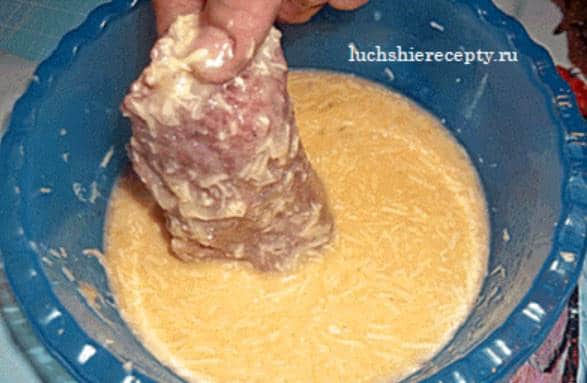
7. The next and also the last stage of meat felting is dipping a piece of meat in flour (you can use breadcrumbs mixed with spices).
How many calories are in chicken schnitzel?
As you can see, schnitzel has quite a few varieties, but we are interested in chicken, so we can calculate the calorie content per 100 grams using two options: Parisian schnitzel and Viennese, where chicken is acceptable for cooking, but the dish is breaded, so without it it will have different energy intensity indicators.
Calorie content of breaded Wiener schnitzel
The classic recipe for Wiener schnitzel includes 200 g of chicken fillet, salt and spices, and suggests using one chicken egg and 50 g of breadcrumbs as a breading.
- On average, 1 selected egg weighs 55-60 g, which is 94 kcal already in terms of grams of product.
- The calorie content of breadcrumbs is very high - 173 kcal per 50 g.
- As a result, 110 g of such breading, intended for preparing 1 schnitzel, accounts for 268 kcal.
- A two-hundred-gram chicken fillet (1 serving of schnitzel) is 226 kcal.
After all the additions and divisions, you can easily calculate that the calorie content of one 300 g of chicken schnitzel is 490 kcal, while 100 g of such a dish “weighs” 159 kcal, and this does not include frying.
Calorie content of Parisian schnitzel without breading
With Parisian schnitzel, everything is simpler. There is no breading, so the calculation is based solely on the net weight of the meat.
Pork brizol recipe
To prepare you will need
:
- about 700-800 g sirloin;
- a little coarse table salt;
- for frying - flour and fat;
- butter - 60-70 g;
- chopped green onions - 1 teaspoon. spoon.
Cooking procedure
:
- Wash a piece of meat and dry it with a paper towel.
- Cut across the grain into small slices no more than 1 cm thick.
- Beat each slice, wrapped in plastic wrap, to a thickness of 1-2 mm.
- Use a knife to shape the piece into a circle with a diameter of about 10-12 cm.
- Season the brizoli with a little salt and flour.
- Quickly fry in hot fat for 1-2 minutes on each side until golden brown, turning on both sides.
- Serve on a warm platter with a knob of butter on top and sprinkle with onions. The best side dish for brizol is stewed or fresh vegetables.
Eat for your health!
Pork calories:
290 kcal.* * average value per 100 grams, depends on the part of the carcass and the method of preparation
Meat products are one of the important components of a proper and balanced diet. When properly selected and prepared, pork meat will not only be healthy, but will also help you avoid gaining extra pounds.
Chicken parts and their effect on the calorie content of schnitzel
It is also impossible to say exactly how many calories are in chicken schnitzel until we clarify the composition of the recipe and find out which part of the chicken was taken to prepare the “cutlet”: breast or thigh fillet.
- For example, white chicken breast fillet is considered the lowest-fat, high-protein and low-calorie type of meat.
This is why broilers are so valued by those who monitor the quality of their food. Per 100 g of such meat there are only 110-113 kcal, while carbohydrates are 0 g, fat is 1 g, and protein is as much as 23 g.
- The second “meat” place in a chicken carcass is the thighs; they have a higher calorie content - 185 kcal per 100-gram serving. There is more fat here - 11 g, and less protein - 21 g. But this schnitzel will turn out juicier and tastier.
How does frying in oil affect calories?
As you know, frying in oil is not the best (from a dietary point of view) way of cooking food, because it adds quite a lot of calories to the dish.
- As experts have calculated, during the frying process, meat absorbs 20% of the oil used in cooking. Thus, regular frying of a clean, unbreaded Parisian schnitzel with 50 ml of oil in a frying pan will add 130-150 kcal to the calorie content of the breast.
- At the same time, we must not forget that without breading, the moisture from the meat will evaporate, the weight of the fillet will correspondingly decrease, and the calorie content of the product will become more concentrated.
Thus, the Parisian schnitzel from chicken breast will reach 200 kcal per 100 g by the time it reaches the table.
- In the case of Wiener schnitzel, it is used for deep frying. We hasten to dispel all the myths about the catastrophic harmfulness of this method of frying.
- Firstly, as scientists have found, deep-frying products have less calories, because when they get into hot oil, a dense crust immediately forms on the surface of the product, which prevents the oil from penetrating inside.
- Secondly, this very crust retains all the juices of the meat inside, so the schnitzel turns out more tender.
- Thirdly, this fast method of heat treatment makes it possible to preserve the beneficial substances in the product as much as possible.
- But it is worth considering that for high-quality deep-frying, the cooking temperature must be no lower than 180°C, so that when it gets into the oil environment, the schnitzel immediately sizzles and quickly becomes covered with a crispy shell. The calorie content of such schnitzel is 175 kcal per 100 g.
To summarize, we can say that breading and deep frying do not always make a dish even more “heavier”. As we were able to find out, Wiener chicken schnitzel has less calories than the “naked” Parisian one, and this despite the presence of eggs and breadcrumbs in the recipe.
Well, agree: there is nothing wrong if you allow yourself, at least once a month, to taste juicy, tender, chicken fillet in a delicious crispy crust.
Myths about pork
In fact, this type of meat contains a large amount of B vitamins, iron, zinc, phosphorus, magnesium, selenium, potassium, and almost all the necessary amino acids. It is believed that properly cooked pork is beneficial for women during lactation, as it enhances the production of breast milk. In addition, some substances contained in pork have natural antidepressant properties. This type of meat is also recommended for men to increase potency.
- Causes indigestion.
In reality, pork is perfectly digestible by a healthy stomach. Moreover, researchers have proven that lean pig meat is the best choice for the diet.
- Very fatty meat.
At first glance, it may seem crazy, but pork is one of the leanest meats. Pure pork contains much less fat than beef or young lamb and is not too much higher than chicken meat. Meanwhile, pork contains components that contribute to a more active accumulation of lipids in the human body. For comparison: a 100-gram piece of chicken breast contains 142 kilocalories, a similar portion of pork tenderloin is approximately 96 kcal. And what’s most interesting is that both products contain the same amount of fat - 3 g. But those who want to lose extra pounds should not get carried away with pork cutlets. Although if once a week a dietary tenderloin or pork shoulder appears on the menu, this will definitely not affect your figure. By the way, an adult can consume almost 200 g of pork daily without harm to health.
It is important for children to prepare dishes from dietary parts of meat (pre-cut out all the fat).
- Not for children.
Nutritionists advise starting the first feeding of babies after 8 months. And lean pork slices, minced into puree, are also suitable for this. It is important to start complementary feeding with meat from half a teaspoon of the product, gradually increasing the pork portions. By the way, it is extremely undesirable for children with intolerance to be given veal meat puree, but nutritionists have nothing against pork. The main thing is to trim off the greasy parts.
The quality of the finished dish directly depends on the freshness of the pork used during cooking. Here are some tips on what a cut of fresh pig meat should look like.
And further. When choosing pork, you need to decide in advance what you plan to cook. And again - valuable tips:
- neck - for barbecue;
- carbonade – barbecue, frying;
- ribs – barbecue, baking, smoking;
- rump – baking, stewing;
- ham – frying, baking, stewing, boiled pork;
- knuckle - jellied meat;
- undercut – frying, smoking;
- brisket - soup;
- front ham – frying;
- head - jellied meat;
- ear - jellied meat;
- tenderloin (the most dietary part) – frying, stewing.
